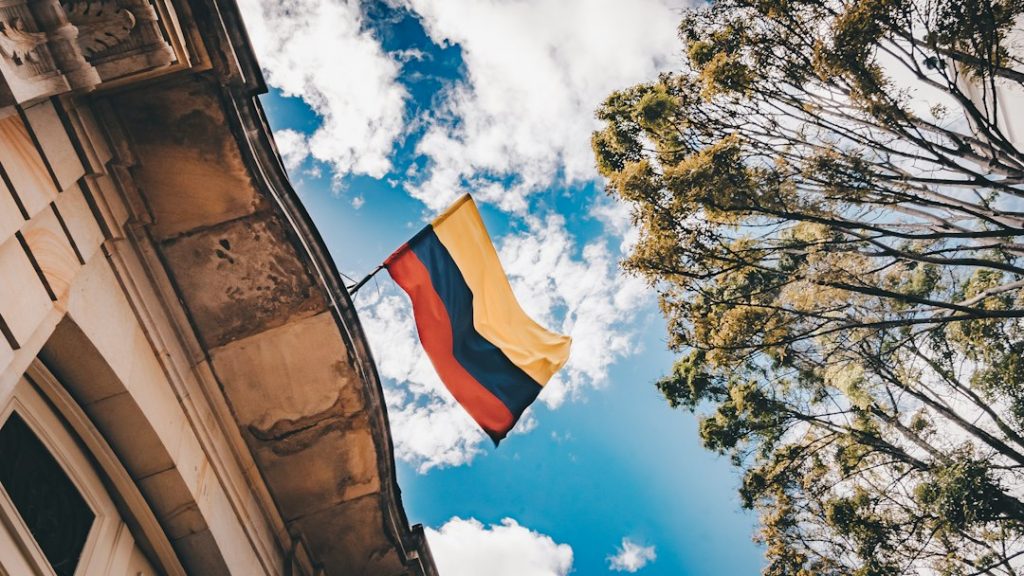Colombia is a country with a rich history and diverse culture. From its indigenous roots to its colonial past, Colombia has a fascinating story to tell. The country is home to numerous archaeological sites, museums, and cultural events that showcase its vibrant heritage. In this article, we will explore some of the wonders of Colombia’s history and culture, from the Lost City of the Tayrona Civilization to the Barranquilla Carnival.
Summary
- The Lost City of the Tayrona Civilization is a fascinating archaeological site in Colombia.
- The Gold Museum in Bogotá is a must-visit for anyone interested in the country’s rich history.
- The Salt Cathedral in Zipaquirá is a stunning example of Colombian architecture.
- The Comuna 13 neighborhood in Medellín is home to a vibrant street art scene.
- Cartagena’s Old Town is a charming colonial gem that shouldn’t be missed.
The Wonders of the Lost City of the Tayrona Civilization
The Lost City, also known as Ciudad Perdida, is an ancient archaeological site located in the Sierra Nevada de Santa Marta mountains in northern Colombia. It was built by the Tayrona civilization around 800 AD and was abandoned during the Spanish conquest. The site was rediscovered in 1972 and has since become a popular tourist destination.
Visiting the Lost City requires a multi-day trek through dense jungle and steep terrain. The journey is physically demanding but incredibly rewarding. Along the way, visitors can immerse themselves in the natural beauty of the Sierra Nevada and learn about the indigenous communities that still inhabit the region.
The Rich History of the Gold Museum in Bogotá
The Gold Museum, located in Bogotá, is home to one of the largest collections of pre-Columbian gold artifacts in the world. The museum showcases over 55,000 pieces of gold and other precious metals, offering visitors a glimpse into Colombia’s rich history.
Gold has played a significant role in Colombian culture for centuries. It was used by indigenous communities for ceremonial purposes and as a symbol of power and wealth. The Gold Museum provides historical context for these artifacts, allowing visitors to understand their cultural significance.
When visiting the Gold Museum, it is recommended to take a guided tour to fully appreciate the collection. The museum offers both English and Spanish tours, providing detailed explanations of each exhibit. Additionally, visitors can participate in workshops and demonstrations to learn more about the techniques used to create these intricate pieces of art.
The Magnificent Architecture of the Salt Cathedral in Zipaquirá
The Salt Cathedral, located in the town of Zipaquirá, is a unique underground church built within a salt mine. It is considered one of Colombia’s most impressive architectural wonders. The cathedral was first constructed in 1954 and has since been expanded and renovated to accommodate more visitors.
A guided tour of the Salt Cathedral takes visitors through a series of chambers and tunnels, each representing a different stage of the Catholic Stations of the Cross. The cathedral’s architecture is awe-inspiring, with towering columns and intricate salt sculptures.
To get to Zipaquirá, visitors can take a bus or train from Bogotá. The journey takes approximately one hour, making it an ideal day trip from the capital city. Once in Zipaquirá, the Salt Cathedral is easily accessible by foot or taxi.
The Vibrant Street Art Scene in the Comuna 13 Neighborhood of Medellín
Comuna 13, located in the city of Medellín, was once one of the most dangerous neighborhoods in Colombia. However, in recent years, it has undergone a remarkable transformation thanks to its vibrant street art scene.
The neighborhood’s walls are now adorned with colorful murals that tell stories of resilience and hope. Guided tours of Comuna 13 allow visitors to learn about the history of the area and the social impact of the street art movement.
The street art in Comuna 13 has not only beautified the neighborhood but also provided economic opportunities for local artists. Many of the murals depict themes of peace and unity, reflecting the community’s desire for a brighter future.
The Colonial Charm of Cartagena’s Old Town
Cartagena’s Old Town, also known as the Walled City, is a UNESCO World Heritage site and a must-visit destination in Colombia. The historic district is characterized by its colorful colonial architecture, cobblestone streets, and charming plazas.
Exploring Cartagena’s Old Town is like stepping back in time. Visitors can wander through the narrow streets, admiring the balconies adorned with bougainvillea and the grand colonial mansions. The area is also home to numerous landmarks, including the iconic Clock Tower and the San Felipe de Barajas Castle.
To fully experience the charm of Cartagena’s Old Town, it is recommended to take a guided walking tour. These tours provide historical context and insight into the city’s rich heritage. Additionally, visitors can attend cultural events and festivals that take place throughout the year, such as the Cartagena International Music Festival.
The Pre-Columbian Archaeological Site of San Agustín
The archaeological site of San Agustín, located in southern Colombia, is one of the country’s most important cultural treasures. It is home to hundreds of ancient stone statues and tombs that date back to the 1st century AD.
A guided tour of San Agustín allows visitors to explore the various archaeological sites within the park. The statues, known as “aguacates,” depict human figures, animals, and mythical creatures. They provide valuable insights into the beliefs and customs of the ancient indigenous cultures that inhabited the region.
Getting to San Agustín can be a bit challenging as it is located in a remote area. However, there are buses and private tours available from nearby towns such as Popayán or Neiva. It is recommended to plan ahead and make arrangements for transportation and accommodation.
The Indigenous Culture of the Guajira Peninsula
The Guajira Peninsula, located in northern Colombia, is home to the Wayuu people, one of Colombia’s largest indigenous communities. The Wayuu have a rich cultural heritage and are known for their vibrant textiles, intricate weaving techniques, and traditional music.
Visiting the Guajira Peninsula offers a unique opportunity to learn about the Wayuu’s way of life and their deep connection to the land. Visitors can stay in traditional Wayuu rancherías, participate in weaving workshops, and experience traditional ceremonies.
It is important to approach tourism in the Guajira Peninsula with respect and responsibility. Indigenous communities face numerous challenges, including poverty and lack of access to basic services. By supporting local initiatives and engaging in responsible tourism practices, visitors can contribute to the well-being of these communities.
The Afro-Colombian Heritage of Palenque de San Basilio
Palenque de San Basilio is a small town located near Cartagena that holds great historical and cultural significance. It was founded by escaped African slaves in the 17th century and is considered the first free town in the Americas.
The people of Palenque de San Basilio have preserved their African heritage through their language, Palenquero, which is a unique blend of Spanish and African languages. The town is also known for its vibrant music and dance traditions, such as bullerengue and mapalé.
Visiting Palenque de San Basilio offers a glimpse into Colombia’s Afro-Colombian heritage. Visitors can learn about the town’s history through guided tours, interact with the locals, and experience traditional music and dance performances.
The Historical Significance of the Battle of Boyacá
The Battle of Boyacá, fought on August 7, 1819, was a decisive victory for the independence forces led by Simón Bolívar. It marked a turning point in Colombia’s struggle for independence from Spanish rule.
Every year on August 7th, Colombia celebrates the Battle of Boyacá as a national holiday. The day is marked by parades, military ceremonies, and cultural events throughout the country. It is an opportunity for Colombians to reflect on their history and honor the heroes who fought for their freedom.
There are several historical sites and museums related to the Battle of Boyacá that visitors can explore. These include the Boyacá Bridge, where the battle took place, and the Boyacá Museum, which houses artifacts and exhibits related to the battle.
The Cultural Traditions of the Barranquilla Carnival
The Barranquilla Carnival is Colombia’s largest carnival celebration and one of the biggest in the world. It takes place in the city of Barranquilla and attracts thousands of visitors each year.
The carnival is a vibrant display of music, dance, and colorful costumes. It features various events and traditions, including parades, folkloric dances, and the crowning of the Carnival Queen. The streets of Barranquilla come alive with music and celebration during this time.
To experience the Barranquilla Carnival like a local, it is recommended to join a guided tour or participate in a cultural exchange program. This allows visitors to learn about the traditions and customs associated with the carnival and interact with the local community.
Colombia’s rich history and diverse culture offer a wealth of experiences for visitors. From ancient archaeological sites to vibrant street art scenes, there is something for everyone to explore and learn about. By immersing ourselves in Colombia’s heritage, we can gain a deeper understanding of its people and their resilience. So, pack your bags and embark on a journey through Colombia’s fascinating past and vibrant present.
FAQs
What are some important cultural landmarks in Colombia?
Colombia has several important cultural landmarks, including the Gold Museum in Bogotá, the Salt Cathedral of Zipaquirá, and the walled city of Cartagena.
What is the Gold Museum in Bogotá?
The Gold Museum in Bogotá is a museum that houses the largest collection of pre-Columbian gold artifacts in the world. It has over 55,000 pieces of gold and other materials from various indigenous cultures in Colombia.
What is the Salt Cathedral of Zipaquirá?
The Salt Cathedral of Zipaquirá is an underground Roman Catholic church built within the tunnels of a salt mine. It is located in the town of Zipaquirá, about an hour outside of Bogotá.
What is the walled city of Cartagena?
The walled city of Cartagena is a historic district in the city of Cartagena that is surrounded by a wall built in the 16th century. It is a UNESCO World Heritage Site and is known for its colonial architecture and vibrant culture.
What are some other important historical sites in Colombia?
Other important historical sites in Colombia include the San Agustín Archaeological Park, the Ciudad Perdida (Lost City), and the Palace of Inquisition in Cartagena.


